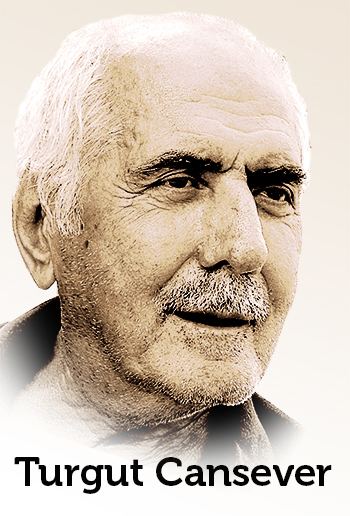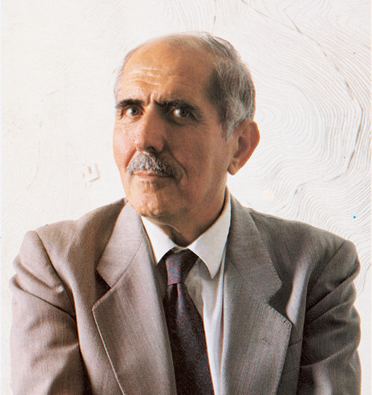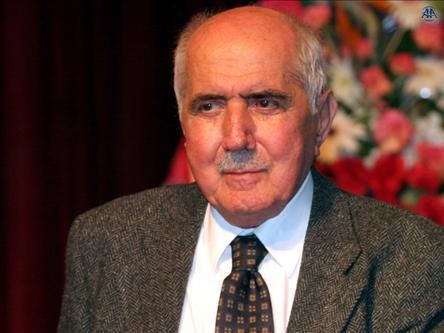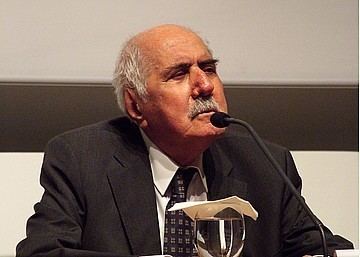Nationality Turkish Occupation Architect | Name Turgut Cansever Role Architect | |
 | ||
Projects Ertegun HouseDemir Holiday VillageTurkish Historical Society Awards Aga Khan Award for Architecture Similar People Izzettin Calislar, Cemil Cahit Toydemir, Sukru Naili Gokberk | ||
Mim turgut cansever i le m lakat
Turgut Cansever (12 September 1921 - 22 February 2009, İstanbul) Turkish Architect, city planner, thinker. He's the only architect in the World that took Aga Khan Award for Architecture for three times. He's also known as "The Wise Architect". He took charge in many town, zoning and protection areas projects. He designed Beyazıt Square. He is the owner of the first art history doctoral thesis.
Contents
- Mim turgut cansever i le m lakat
- Turgut cansever de ehir ve mimari
- Life
- Education
- Career
- Cansever as a Wise man
- References

Turgut cansever de ehir ve mimari
Life

He was born in Antalya in 1921. He's the eldest of five children of Hasan Ferit and his wife Saime.

His father Hasan Ferit was the son of Kasimpasa Turabi dervish lodge sheikh and Sublime Porte's senior bureaucrat Sheikh Ali Effendi. Mr. Hasan Ferid was an intellectual and a doctor who chose studying medicine instead of being bureaucrat, was head doctor at Sina Front in war years. He was among the founders of Turkish Hearts. He was dissent to government ideology and by rejecting offer for high level duty, he chose to take place in struggle for malaria in Antalya and Adana. He was banished in Tavsanli Bursa.

His mother Saime was a teacher from Plovdiv. She was raised as the student of Halide Edip Adıvar, at the age of 19 she accepted to be a volunteer teacher at Jerusalem.
Education
Cansever went to primary school at Ankara and Bursa. After primary school his family moved to Istanbul. He completed his high school education at Galatasaray High School. Some of his classmates were Turan Güneş, Turhan Feyzioğlu, İlhan Usmanbaş, Avni Arbaş, Cihat Burak.
He went to Istanbul State Academy of Fine Arts in thinking of being an artist and he met with Halil Dikmen, Mazhar Şevket İpşiroğlu, Sedad Hakkı Eldem. He decided to study architecture. He became assistant of Sedad Hakkı Eldem. After his Architecture education he headed for art history doctoral thesis. In 1946 he started lessons and his Islamic Art History teacher Ernst Diez moved him so much. In 1949 "A Stylistic Analysis of Ottoman and Seljuk Column Heads" was the first art history doctoral thesis in Turkey. He visited 14 Anatolian city and 111 structures. His work published with the name "Chasing Eternal Space: Column Heads in Ottoman and Seljuk Art".
He traveled Europe by going France for a while. He assumed the title of associate professor in 1960 with his "Problems of Modern Architecture" thesis at Istanbul University Faculty of Letters.
Career
He restored Sadullah Paşa waterfront mansion in 1949. He established his first architect's office in 1951 with his partner Abdurrahman Hancı. Anatolian Club Hotel that they designed together was one of his important work. Karatepe open-air museum, Diyarbakır College, METU Campus Contest project, Turkish Historical Society building was the designed works of 1950.
In 1952 he married Mrs. Nilufer. They had 3 children. Their son Hasan, daughters Emine and Feyza chose to be an architect.
In 1958, Cansever started designing Beyazıt Square. This work moved him to the struggle for town, zoning and protection areas. He took charge plenty in this field. He was the head of Marmara Region Planning Organizations in 1959-1960. He was in Istanbul Municipality Planning Authority in 1961. In 1974-1975 he was the head of World Bank Istanbul Metropolitan Planning Project. Between 1974-1976 he was the Member of Turkey Delegation of the European Council; between 1975-1980 he worked at Istanbul Municipality, in 1979 he worked as Ankara Municipality Metropolitan Planning, new habitation, town centers and protection adviser.
1960s was the time that Cansever met with Bodrum. One of two Aga Khan Award for Architecture he took was brought by Ertegün House was the result of meeting Bodrum.
Turkish Historical Society building (1951-1967, Ankara, with Ertur Yener) and Ahmet Ertegün House restoration (1971-1973, Bodrum) brought him two Aga Khan awards in 1980. He took his third award in 1992. Demir Holiday Village Project that consists of 3 hotels and 500 houses, carried out by Emine Ogun, Mehmet Ogun and Feyza Cansever at Mandalya Bay brought him the third Aga Khan Award. He became the only architect that took Aga Khan Award for Architecture for three times.
He worked as education program preparation adviser at Makkah University in 1983. Same year, he took charge in Master Jury of Aga Khan Award for Architecture.
Cansever continued publication in 1990s. He published many articles, collected his compilations into a book. He published Mimar Sinan's monumental book in 2005.
About him, an exhibition "Turgut Cansever: Architect and thinker" was held in Istanbul, in 2007. It was the first retrospective architecture exhibition that was prepared with materials that have the characteristics of archival documents.
He was fitted with a pacemaker in 2000, and was bedbound from 2008. He died on 22 February 2009 at his house in Kadıköy, Istanbul, and was buried the following day in Edirnekapi cemetery.
Cansever as a Wise man
He is not just an architect, he is also thinker about religious and architectural topics. He thinks that God gave act of judgment to human beings so architects can use this talent to create new designs as human. On the contrary of muslim society he has same concerns about 20th century of mosque architecture because muslims didn't take care of to develop mosque architecture , just copy previous designs and while he designing mosques he added some new forms to modernday mosques.
